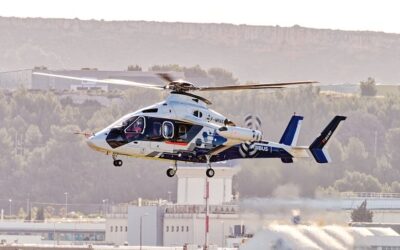Upgrade for U-2S Keeps Capabilities Honed
As at 19 April, the Japanese Air Self Defence Force (JASDF) pilot of an F-35A LIGHTNING II which disappeared over the Pacific during a training flight had still not been found. This second F-35 loss follows the crash of a US Marine Corps F-35B in South Carolina last September. Search efforts have included use of the US Air Force’s (USAF) venerable U-2S DRAGON LADY reconnaissance aircraft – proof of the type’s continuing utility and effectiveness after 62 years’ service.
It shows no immediate signs of retiring, either. In January USAF budget requests stated that its retirement has been postponed indefinitely. Therefore, to ensure its reconnaissance capabilities remain sharp, it will be upgraded with a new sensor in the form of the Raytheon Advanced Synthetic Aperture Radar (ASARS-2B), following award of a $320 million contract in March. The initiative involves a major enhancement of the existing Raytheon ASARS-2A X-band system already equipping the aircraft. This radar has an estimated range of 165km and an 18.3m resolution. ASARS-2A is a sideways-looking SAR with the antennas positioned perpendicular to the direction of travel, either side of the fuselage. Imagery gathered by the radar can be transmitted in near real-time to the ground-based Multi-Sensor Exploitation System, where it can be analysed. This version of the radar has two moving target detection modes (search and spot) and the same number for stationary search and spot target detection modes.
The ASARS-2A is now ageing. Development of the radar began in 1972 to answer a US/NATO requirement for radar imagery of second-echelon Warsaw Pact force dispositions in central Europe. Ironically, the end of the Cold War meant this was not a mission the radar would need to conduct. However, since ASARS-2A’s service entry in the early 1990s, the radar has enabled the U-2S to support US-led interventions in Iraq, during NATO operations in the Balkans and during NATO/US-led operations in Afghanistan and Libya.
The upgrade programme will reportedly double the surveillance range of the legacy system, potentially to over 330km: radar flight tests were completed at Edwards AFB, CA earlier this year. The scope of the upgrade is focused on extending the radar’s instrumented range, which will have the important benefit of giving the aircraft a significant stand-off range, lending it the ability to gather imagery of targets of interest from international airspace.
Critical design review for ASARS-2B was completed in 2016. The initiative calls for the radar to feature an Active Electronically Scanned Array (AESA), a modified receiver and new software. As well as extending the radar’s range, this will add a maritime surveillance capability and the ability to generate interleaved radar imagery, meaning, in practice, the radar will exploit the time gap between pulse transmission and reception to allocate new tasks which can include transmitting new pulses. The goal is to extract as much capability from the radar as possible, resulting in a more detailed radar picture. This is a particularly important feature of the U-2S’, whose inherent value lies in the detail of its radar imagery. ASARS-2B will reportedly have a modular design, meaning it can be swapped between aircraft as and when required by the mission. Open sources state that a total of 11 ASARS radars were originally constructed: the current U-2S inventory stands at 27. Therefore, either only a portion of the fleet is equipped with the ASARS-2A at any one time, or the radar can already be shared between aircraft.
The ASARS Improvement Programme (AIP), which developed the basic architecture to the ASARS-2 status, has already added several improvements, including enhancements to the radar’s processing and image quality. Geolocation of targets was improved, as was the radar’s broad area coverage of static and moving targets and datalink speeds for the transmission of imagery, with the transmission of raw radar data accelerated to 274mbps and processed radar imagery being transferred at a rate of 45mbps. Upgraded radars subsequently received the nomenclature ASARS-2A. Alongside the radar modifications, ASARS ground stations were improved with new processors, using commercial off-the-shelf technology.
Given the limited number of ASARS originally built, the $320 million for the ASARS-2B upgrade could translate to $29 million per system. Adjusted for inflation, the unit cost of the legacy ASARS-2 is $8.4 million. MON contacted Raytheon for further details on remaining development work and the expected schedule for radars to enter service, but was directed to the USAF by the company: no further details have yet emerged.

























